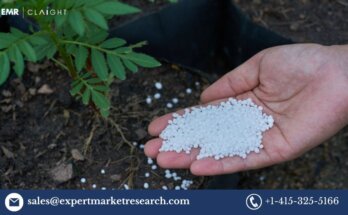Table of Contents
Introduction
Magnesium oxalate is an important inorganic compound with applications in various industries, including pharmaceuticals, agriculture, and food processing. It is known for its role as a precursor in the synthesis of magnesium salts and other chemical compounds. Establishing a magnesium oxalate manufacturing plant presents significant business opportunities due to the growing demand in multiple sectors. This Magnesium Oxalate Manufacturing Plant Project Report outlines the project for setting up a magnesium oxalate manufacturing facility, detailing the production process, market analysis, sustainability considerations, and community engagement strategies.
Project Objectives
The primary objectives of the magnesium oxalate manufacturing plant project include:
- Efficient Production: To develop a streamlined, cost-effective production process for high-quality magnesium oxalate.
- Quality Assurance: To ensure that the magnesium oxalate produced meets industry standards for purity and safety.
- Market Development: To identify and capture opportunities in various sectors, including pharmaceuticals, agriculture, and food processing.
- Environmental Responsibility: To implement sustainable practices in production and waste management.
- Community Engagement: To build positive relationships with local communities and stakeholders.
Get a Free Sample Report with Table of Contents @
Manufacturing Process
The production of magnesium oxalate involves several key stages:
1. Raw Material Sourcing
The primary raw materials for magnesium oxalate production include:
- Magnesium Sulfate: A common magnesium source.
- Oxalic Acid: A weak dicarboxylic acid that reacts with magnesium salts.
Sourcing high-quality raw materials is essential for ensuring the efficiency and safety of the manufacturing process.
2. Production Method
The most common method for producing magnesium oxalate involves the reaction between magnesium sulfate and oxalic acid. The process typically includes the following steps:
a. Reaction Process
- Mixing: Magnesium sulfate and oxalic acid are mixed in a reactor, typically using water as a solvent.
- Heating: The mixture is heated to promote the reaction, which usually occurs at moderate temperatures.
- Formation: Magnesium oxalate precipitates out of the solution as a solid.
b. Separation and Purification
- Filtration: The precipitated magnesium oxalate is filtered out from the remaining solution.
- Washing: The solid is washed with water to remove any unreacted materials and by-products.
- Drying: The washed magnesium oxalate is then dried to obtain the final product in a powdered form.
3. Quality Control
Quality control is critical in the manufacturing process. The final product undergoes rigorous testing for:
- Purity: Ensuring that the magnesium oxalate meets required specifications.
- Contaminants: Checking for any harmful impurities.
- Physical Properties: Verifying characteristics such as solubility and particle size.
4. Storage and Packaging
Once quality control is complete, magnesium oxalate is stored in specialized containers designed to prevent contamination. Proper labeling with safety information is essential for handling and transport.
5. Distribution
The final product is distributed to various industries, including pharmaceuticals, agriculture, and food processing. Establishing efficient logistics and distribution channels is crucial for timely delivery to customers.
Market Analysis
1. Target Markets
The primary markets for magnesium oxalate include:
- Pharmaceutical Industry: Used as an ingredient in various medications and supplements.
- Agricultural Sector: Employed in fertilizers and soil conditioning agents.
- Food Processing: Utilized as a food additive and preservative.
2. Demand Trends
The demand for magnesium oxalate is influenced by several factors:
- Growth in Pharmaceuticals: The increasing production of dietary supplements and medications is driving demand for magnesium-based compounds.
- Rising Agricultural Demand: The push for more effective fertilizers and soil amendments is boosting the use of magnesium oxalate.
- Health Conscious Consumers: The growing trend toward healthier food options and supplements fuels demand in the food processing sector.
3. Competitive Landscape
The magnesium oxalate market is competitive, with several established manufacturers. Understanding the competitive landscape is essential for effective positioning. Strategies such as product differentiation, cost leadership, and superior customer service will be vital for the new plant’s success.
Sustainability Strategies
Implementing sustainability practices is crucial for the magnesium oxalate manufacturing plant. Key initiatives may include:
- Waste Management: Developing systems to recycle waste products generated during production.
- Emission Controls: Implementing technologies to minimize emissions and comply with environmental regulations.
- Energy Efficiency: Utilizing energy-efficient processes and renewable energy sources to reduce the plant’s carbon footprint.
Community Engagement
Building positive relationships with the local community is vital for the project’s success. Strategies may include:
- Educational Outreach: Hosting workshops to inform local stakeholders about the benefits of magnesium oxalate and sustainable practices.
- Job Creation: Highlighting the employment opportunities the plant will create, contributing to local economic growth.
- Feedback Mechanisms: Establishing channels for community members to voice concerns and provide input on plant operations.
FAQ
1. What is magnesium oxalate used for?
Magnesium oxalate is used in pharmaceuticals, agriculture, and food processing, particularly as a supplement, fertilizer ingredient, and food additive.
2. How is magnesium oxalate produced?
It is produced by reacting magnesium sulfate with oxalic acid, followed by separation, washing, and drying processes.
3. What are the main applications of magnesium oxalate?
Main applications include its use in medications, fertilizers, and as a food additive.
4. What sustainability practices will the plant implement?
The plant will focus on waste management, emission controls, and energy efficiency to minimize environmental impact.
5. How will the community be involved in the project?
The project will engage the local community through educational outreach, job creation initiatives, and feedback mechanisms.
6. What factors are driving the demand for magnesium oxalate?
Demand is driven by growth in the pharmaceutical and agricultural sectors, as well as increased interest in health and wellness products.
Related Reports
https://www.expertmarketresearch.com/reports/medium-voltage-motors-market
https://www.expertmarketresearch.com/reports/lubricating-oil-additives-market
https://www.expertmarketresearch.com/reports/gelatin-market
Media Contact:
Company Name: Claight Corporation
Contact Person: Lewis Fernandas, Corporate Sales Specialist — U.S.A.
Email: sales@expertmarketresearch.com
Toll Free Number: +1–415–325–5166 | +44–702–402–5790
Address: 30 North Gould Street, Sheridan, WY 82801, USA
Website: www.expertmarketresearch.com
Aus Site: https://www.expertmarketresearch.com.au




